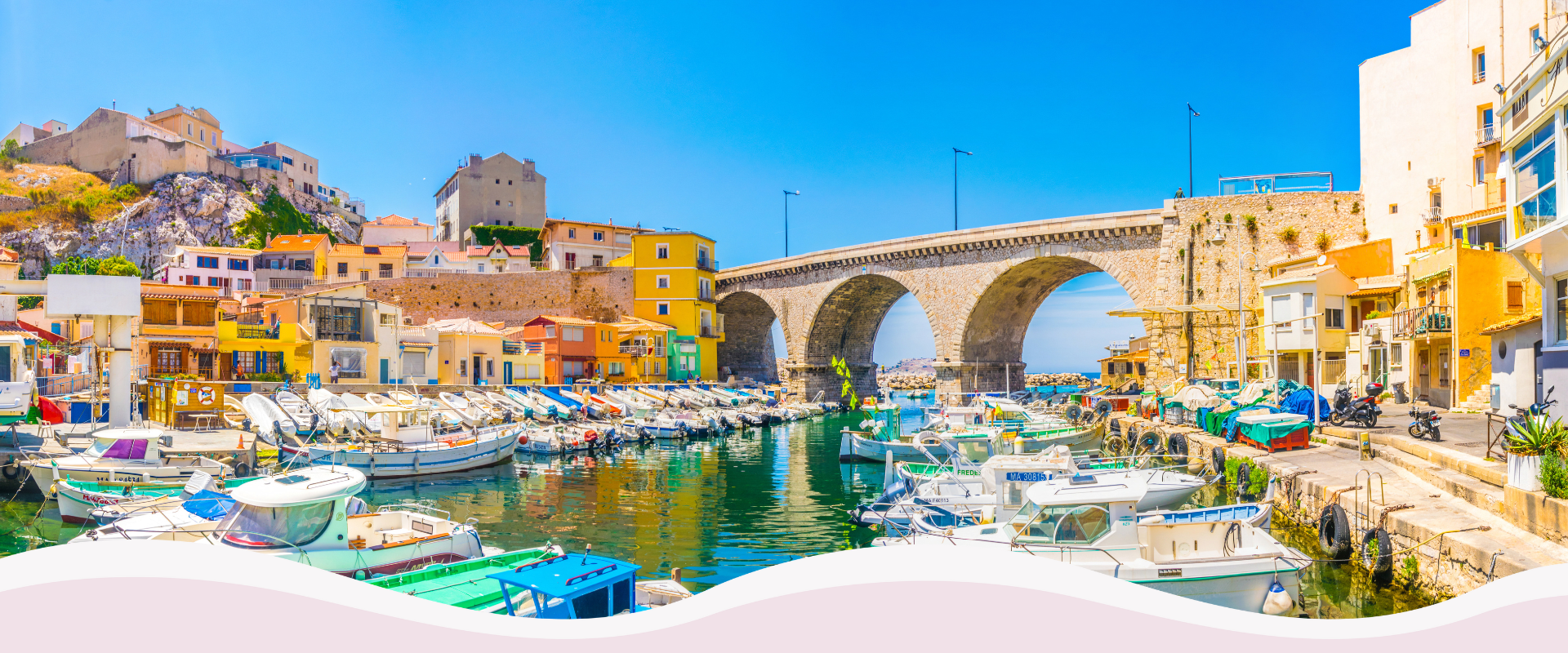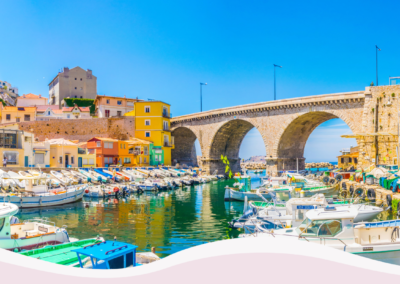Climate change in Marseille
With the Mediterranean basin warming 20% faster than the global average, Marseille is already suffering the consequences of climate change, which are set to intensify over the coming years. In addition to rising sea levels, flooding and the loss of biodiversity, the increase in heat waves and their intensity is a major challenge to which we must adapt as a matter of urgency. Climate forecasts predict that by the end of the century, there will be 24 very hot days (>35°C) per year (i.e. +24 days compared with the 1976-2005 reference period) and 105 hot nights (>20°C) (i.e. +69 days compared with the same reference period). In 2100, 38 days a year are also expected to be heatwaves (high value). These forecasts need to be taken into account in order to protect our health, particularly that of the most vulnerable people who are most at risk.
Tourism in Marseille, in the context of climate change
The city has many assets: the sea, the sun, nature and culture that need to be preserved. Its accessibility and friendly people are also strong values that Marseille is proud to represent. From the Old Port to the Calanques, via the “Bonne Mère”, Marseille is a land of varied and surprising landscapes. Green and natural spaces stretch as far as the eye can see around the city. The traces of its rich history are omnipresent in its architecture, culture and people. With its long history, distinctive culture, strong identity and ethnic mix, Marseille is now one of the most cosmopolitan cities in France. With its sights firmly set on the future, Marseille’s future is now rooted in sustainable development, as demonstrated by the “Marseille 2030 Objectif Climat” (Marseille 2030 Climate Objective) approach, which is now being applied to all the city’s public policies. In this respect, the new tourism strategy “Marseille, a sustainable and attractive destination: 2024-2030 strategy for the responsible development of tourism and leisure” provides the framework for renewed action by the city, structured around 4 guidelines: ‘Marseille, a responsible destination’, ‘Marseille at any time and in any season’, ‘Marseille for everyone’, ‘Marseille, an innovative destination and ’tourist factory”. The cool paths are one of the project that meets these guidelines, by offering fresh and inclusive paths and by promoting another way of being a tourist.
During heat waves, tourists are particularly affected by thermal discomfort, as high temperatures make cultural visits (in Marseille museums, the old port, districts such as the Panier or Notre-Dame-de-la-Garde) difficult, especially in the middle of the day. What’s more, the health risks are exacerbated: elderly tourists and children can suffer from heatstroke, forcing some to cut short their stay or limit their outings. Beaches and creeks become overcrowded. In search of coolness, tourists flock to the urban beaches (Catalans, Prado…), leading to saturation, sometimes as early as in the morning. Heat waves modify or cancel certain activities, such as hiking, because of the risk of fire or the closure of forest areas.
In order to anticipate, absorb and adapt to heat waves in the context of Marseille becoming more touristy, while at the same time reinforcing the pedestrian character of the area, the City of Marseille is currently carrying out studies to create ‘cool paths’ marked out by parks and places to cool off (fountains, access to water and the sea) as well as facilities to provide shade (vegetation, shades, pergolas) while working on the creation of pedestrian continuities.
During the public consultations held in autumn 2024, volunteer residents were able to propose solutions to improve the freshness of these routes, in terms of planting, providing water, creating shade and changing their use.
Here are some of the refreshment solutions you’ll find along the routes:
- 9 pergolas accompanied by tables and benches are deployed to create islands of coolness and shade: 3 on the Esplanade du Mucem, 2 on the Corniche Kennedy, between Plage des Catalans and Malmousque, 1 rue Edmond Oraison, above the Vallon des Auffes, 1 in Parc Benedetti , 1 rue de Nice, 1 Grand Rue. These wooden pergolas were designed by the municipal authorities. The roof of the pergola is made of coconut fibre fabric, providing openwork shade.
- Increased planting, in particular with fragrant climbing plants: rue Caisserie, Cours Julien, Notre-Dame du Mont district, etc. A participatory planting was organised in the Notre-Dame du Mont-Cours Julien neighbourhood. The town provided around thirty planters with climbing jasmines, which residents and shopkeepers were able to plant. These plants will be tended by residents as part of the ‘Rues Jardins’ programme.
- Pedestrianised streets: Rue des Trois Rois, Rue Vian, Rue Poggioli. As part of the pedestrianisation plan for the town centre, several streets have been pedestrianised, along which the Cool Noons ‘Historic Town Centre’ route passes.
- Traffic calming: We have turned one street into a ‘meeting zone’ (rue des Flots Bleus), so that cars do not exceed 20km/h, and public space is better shared between pedestrians, cyclists and cars.
- More #GourdesFriendly along the route: new shops offering to fill your water bottles free of charge have been added to our online map (managed by the company HOALI).
- The cool paths go through newly renovated parks such as Parc Longchamp and Parc Valmer, providing shade and rest areas.
- Pergolas : people already enjoy the shadow provided by the pergolas. We took some initial measurements during the press conference held under one of the pergolas, and noted a temperature differential of around 12 degrees between the unshaded esplanade and under the pergolas
- The planting : people take care of the plants. 33 planters have been implemented.
The City of Marseille decided to join the Cool Noons project to launch a network of cool pedestrian paths in the city. In addition to the first two routes, which will be offered in 2024-2025, the paths that will be proposed over the coming months and years will be located outside the city centre and will focus on enhancing walkability and ecological networks to improve the area’s resilience. What’s more, these green spaces will be able to complement the tourist offer. The aim is to create a network of pedestrian paths alternating between natural paths rich in biodiversity (via natural urban wastelands), calmed and landscaped sections of road (planting, tactical urban shading, signposting), and parks, so as to design coherent and pleasant paths for pedestrians, linking neighbourhoods and enhancing the historical and natural heritage.



